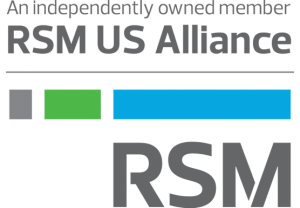Insights
IRS issues guidance on 401(k) and 403(b) plans
IRS Notice 2020-86 provides guidance under the SECURE Act and the Tax
TAX ALERT |
Authored by RSM US LLP
On Dec. 9, 2020, the IRS issued Notice 2020-86 offering guidance for 401(k) and 403(b) plans on certain provisions of the Setting Every Community Up for Retirement Enhancement Act (SECURE Act). Earlier in the week, on Dec. 7, 2020, the IRS released final regulations (T.D. 9937) on a provision under in the Tax Cuts and Jobs Act (TCJA) concerning plan loan offsets.
Notice 2020-86
Notice 2020-86 provides Q&As on the following SECURE Act provisions: (1) the increase from 10% to 15% of eligible pay as the maximum automatic deferral contribution for qualified automatic contribution arrangement (QACA) safe harbor plans; (2) changes in the advance safe harbor notice requirements of traditional 401(k) and 403(b) safe harbor plans with respect to nonelective employer contributions; and (3) the retroactive adoption of safe harbor status for such plans. We previously published an alert summarizing the SECURE Act, found here.
The IRS specifically addresses the following issues:
Automatic enrollment
- In a QACA safe harbor plan, an employee may be required to make elective deferral contributions in a range starting at 3% with annual increases in the deferral amount up to a specified maximum amount, subject to the right to opt out. In other words, an employee will enter the plan and automatically begin deferring 3% in year one, 4% the next year, etc. until the employee reaches the plan’s stated maximum.
- Prior to the SECURE Act, the maximum deferral percentage was 10%.1 An employer now has the option to raise that maximum automatic deferral amount to 15%. Some plan documents do not specify a maximum percentage, but instead incorporate the maximum allowable percentage by reference.
The Notice provides that a plan that incorporates the maximum percentage by reference may continue to use the pre-SECURE Act maximum limit of 10%, provided that the plan is amended to specify the 10% maximum percentage limit by the end of the 2022 plan year. If the plan is not amended, it will be treated as incorporating the 15% maximum retroactive to the first day of the plan year beginning after Dec. 31, 2019, potentially resulting in an operational error.
SECURE Act Changes to Safe Harbor 401(k) Plan Notices
- The SECURE Act eliminated the requirement that an advance notice of traditional safe harbor status on account of a 3% nonelective employer contribution must be provided at least 30 days prior to the start of the plan year.
- However, with respect to safe-harbor matching contributions, the SECURE Act retained the requirement of advance notice within 30 days prior to the beginning of the plan.
Additional Guidance on Notices
The SECURE Act change to the Notice requirement was welcome, but the change created some uncertainty that this Notice addresses.
- The Notice clarified that a traditional safe harbor plan that combined the 3% safe harbor non-elective with non-safe-harbor matching contributions, must still issue a safe harbor notice if it wishes to exempt the match from the Average Contribution Percentage (ACP) test. This continued notice requirement does not apply to a QACA safe harbor plan.
- Notice 2020-86 provides that for years after 2019, an employer who amends a traditional safe harbor plan after the beginning of a plan year to reduce or cease nonelective employer contributions will not be subject to ADP or ACP testing or the top heavy rules for the year, provided that the employer retroactively amends the plan no later than 30 days prior to the end of the plan year to restore such contributions for the entire plan year.
- The Notice contains additional guidance for a plan sponsor wishing convert its non-safe harbor plan to a safe harbor plan by adding a retroactive 3% nonelective employer safe harbor contribution for the entire plan year by a plan amendment made not less than 30 days prior to the end of a plan year. Such a retroactive plan amendment is allowable under the SECURE Act, but, an employer cannot retroactively add safe harbor matching contributions.
- Under applicable pre-SECURE Act rules, an employer was permitted to reduce or suspend safe harbor nonelective contributions during a year only by showing that it was operating at an economic loss, or by reserving its right to reduce or suspend safe harbor nonelective employer contributions in a safe harbor notice.2 To be valid, the reservation of rights had to be contained in a pre-SECURE Act safe harbor notice provided before the beginning of the plan year. Although advance notice of a 3% nonelective employer safe harbor contribution has been eliminated, some plan sponsors nevertheless gave advance notice prior to the beginning of the year to reserve the right to suspend or reduce nonelective employer contributions during the year.
The Notice makes clear that such a reservation of rights remains valid even though not contained in a pre-SECURE Act safe harbor notice. Solely for 2021 plan year, a plan’s deadline for providing such an advance notice for 2021, is the later of (1) 30 days before the beginning of the 2021 plan year or (2) Jan. 31, 2021.
- The SECURE Act provided an extended contribution deadline for employers contributing a 4% nonelective employer safe harbor contribution for a plan year. While the contribution deadline for a 3% safe harbor nonelective employer contribution is the employer’s tax return due date for the year, the extended contribution date for a 4% contribution is the last day of the plan year following the plan year for which the contribution is made. The Notice provides, however, that the deduction for such a contribution made after the employer’s tax return due date may be taken only for the year the contribution is made.
403(b) Plans
The Notice says that the safe harbor 401(k) rules referenced above will apply on similar terms to 403(b) plans that apply the safe harbor rules for 403(b) plans with matching contributions.
Employer action recommended
Employers that use the 3% non-elective approach to safe harbor plan design, no longer have to issue traditional safe harbor notices. Nonetheless, the best advice is issue a notice reserving the right to reduce or suspend safe harbor non-elective contributions during the year. As noted above, the due date to issue such a notice for 2021 is Jan 31, 2021.
Final Regulations on qualified plan loan offsets
The final regulations issued on Dec. 7, 2020 provide final regulations for qualified plan loan offset amounts. The IRS previously issued proposed regulations in August 2020. A previous tax alert summarizes the related TCJA plan loan offset provision and the proposed regulations, here.
As provided in our previous tax alert, a provision in the TJCA extends the rollover deadline for qualified plan loan offset (QPLO) amounts. The proposed regulations provided relevant definitions, and general rules regarding rollover periods and QPLO determinations. Generally, the final regulations adopt the proposed regulations with one modification related to the applicability date. The final regulations provide that the regulations will apply to plan loan offset amounts, including qualified plan loan offset amounts, treated as distributed on or after Jan. 1, 2021. Thus, for example, the rules in section 1.402(c)-3 will first apply to 2021 Form 1099-Rs required to be filed and furnished in 2022. However, taxpayers (including a filer of a Form 1099-R) may apply these regulations with respect to plan loan offset amounts, including qualified plan loan offset amounts, treated as distributed on or after Aug. 20, 2020.
1Code section 401(k)(12)(C).
2See Treas. Reg. section 1.401(k)-3(g)(1)(ii)(A).
Let's Talk!
Call us at +1 213.873.1700, email us at solutions@vasquezcpa.com or fill out the form below and we'll contact you to discuss your specific situation.
This article was written by Joni Andrioff, Katie Beaver and originally appeared on 2020-12-11.
2020 RSM US LLP. All rights reserved.
https://rsmus.com/what-we-do/services/tax/compensation-and-benefits/employee-benefits-programs/irs-issues-guidance-on-safe-harbor-401k-and-403b-plans-and-plan.html
The information contained herein is general in nature and based on authorities that are subject to change. RSM US LLP guarantees neither the accuracy nor completeness of any information and is not responsible for any errors or omissions, or for results obtained by others as a result of reliance upon such information. RSM US LLP assumes no obligation to inform the reader of any changes in tax laws or other factors that could affect information contained herein. This publication does not, and is not intended to, provide legal, tax or accounting advice, and readers should consult their tax advisors concerning the application of tax laws to their particular situations. This analysis is not tax advice and is not intended or written to be used, and cannot be used, for purposes of avoiding tax penalties that may be imposed on any taxpayer.
RSM US Alliance provides its members with access to resources of RSM US LLP. RSM US Alliance member firms are separate and independent businesses and legal entities that are responsible for their own acts and omissions, and each is separate and independent from RSM US LLP. RSM US LLP is the U.S. member firm of RSM International, a global network of independent audit, tax, and consulting firms. Members of RSM US Alliance have access to RSM International resources through RSM US LLP but are not member firms of RSM International. Visit rsmus.com/about us for more information regarding RSM US LLP and RSM International. The RSM logo is used under license by RSM US LLP. RSM US Alliance products and services are proprietary to RSM US LLP.

Vasquez & Company LLP is a proud member of the RSM US Alliance, a premier affiliation of independent accounting and consulting firms in the United States. RSM US Alliance provides our firm with access to resources of RSM US LLP, the leading provider of audit, tax and consulting services focused on the middle market. RSM US LLP is a licensed CPA firm and the U.S. member of RSM International, a global network of independent audit, tax and consulting firms with more than 43,000 people in over 120 countries.
Our membership in RSM US Alliance has elevated our capabilities in the marketplace, helping to differentiate our firm from the competition while allowing us to maintain our independence and entrepreneurial culture. We have access to a valuable peer network of like-sized firms as well as a broad range of tools, expertise and technical resources.
For more information on how Vasquez & Company LLP can assist you, please call +1 213.873.1700.
Subscribe to receive important updates from our Insights and Resources.
